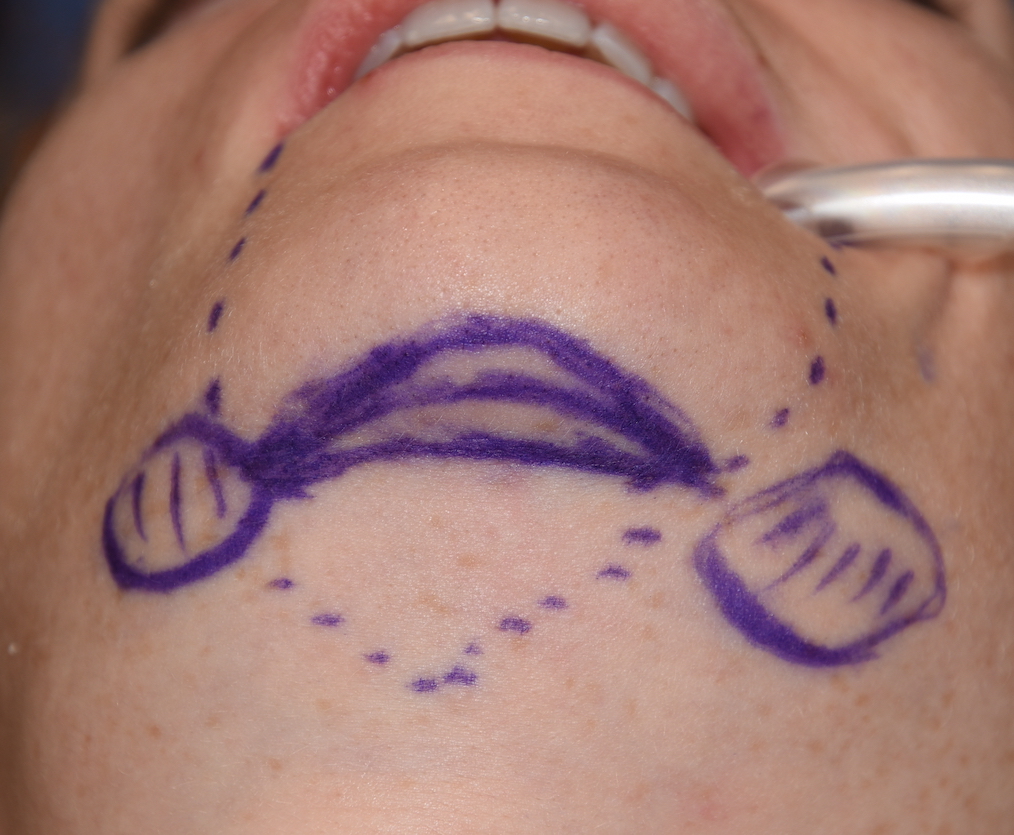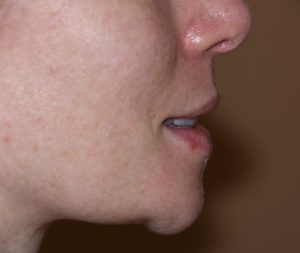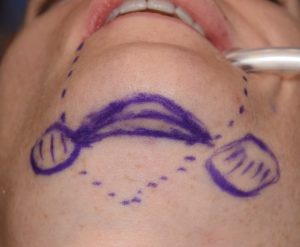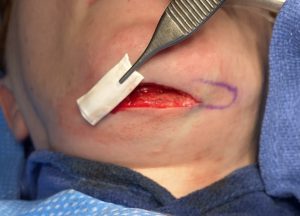Background: Chin ptosis is a well known aesthetic deformity of the soft tissue chin pad that almost always has an iatrogenic cause. (prior surgery) Chin implant removals, intraoral bony chin reductions and decreased bone support of the soft tissue pad through osteotomies are all common surgical histories that I see when patients present with problematic chin ptosis. The most severe forms exist at rest and are magnified when smiling while others occur mainly when smiling. (dynamic chin ptosis)
Chin ptosis has a diverse set of causes and it must first be determined what is the relationship between the amount of soft tissue chin pad and the bone support. The bone support may be adequate and there is too much soft tissue. (Type 1) Conversely the soft tissue chin pad may be normal in size but the bone now lacks support. (Type 2) It is even possible that the combination of both problems exist together. (Type 3) Type 4 is when the bone support is adequate and the chin pad is not excessive but sags off the bone. Determining this bone:soft tissue relationship will guide the approach use for treatment.
Type 1 ptosis requires a submental excision to reduce and tighten the soft tissue chin pad. Type 2 is primarily treated by some form of chin augmentation. Type 3 is treated by a combination chin augmentation and intraoral soft tissue suspension. Type 4 can be treated by intraoral soft tissue suspension or submental pad excision. But regardless of the chin ptosis problem and the technique used to treat it the risk of needing a secondary procedure to optimize the results is common.
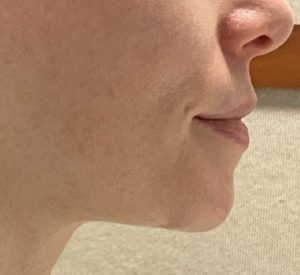
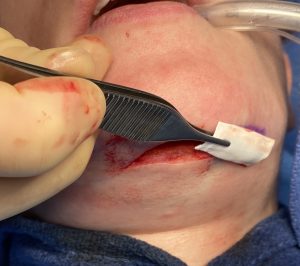
While the goal of chin ptosis correction is one procedure and completely solve the problem, the problem is not an easy one to improve completely the first time. Good improvement is always obtained with the initial surgery but patients, understandably, often want to achieve the best result both in terms of chin pad shape as well as the submental scar. As a result a second or stage 2 procedure may be needed for further refinement.
Case Highlights:
1) Chin ptosis correction surgeries often takes two procedures for maximal refinement of the chin contour.
2) Getting the maximal ptotic soft tissue chin pad removal with the best looking scar is not an assured outcome from the initial surgery.
3) Bony contour irregularities along the bottom edge of the chin bone can be corrected by inferior border shaves or application of thin ePTFE implants.
Dr. Barry Eppley
Indianapolis, Indiana

